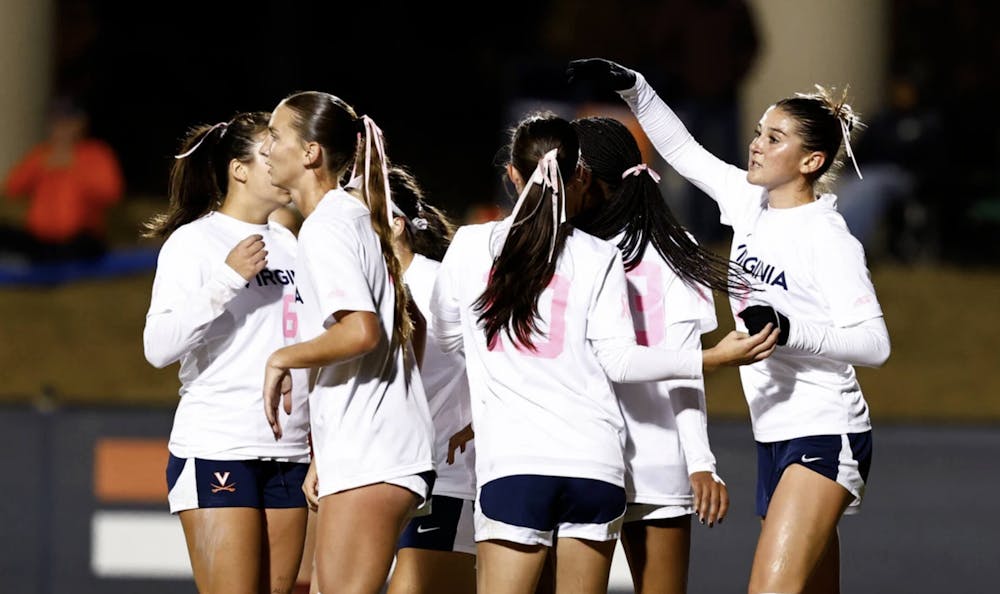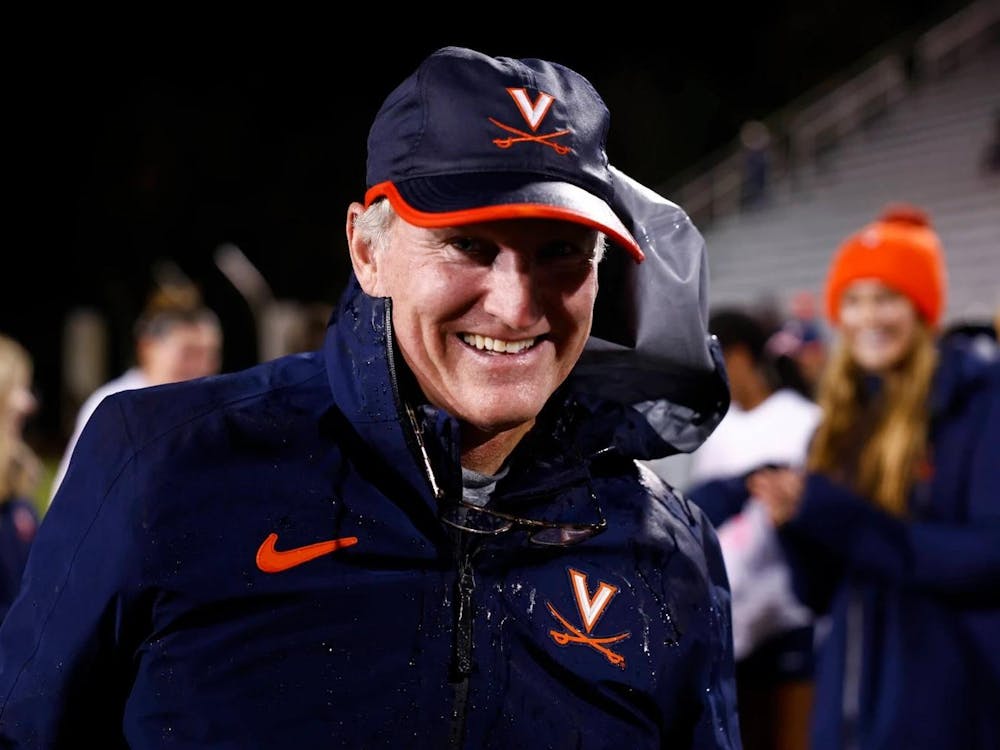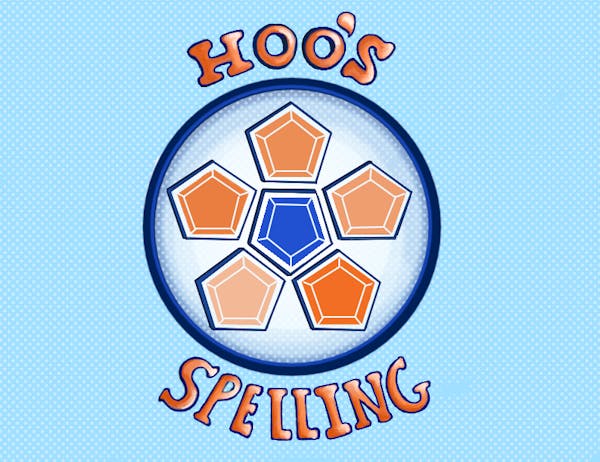As Virginia women’s soccer advances in its almost annual appearance in the NCAA Tournament, the team’s road to history will not be an easy one. After remaining undefeated for the first 12 games of the 2025 season, Virginia was unable to win the conference tournament. Stanford sent the Cavaliers packing in the ACC semifinals, allowing Coach Steve Swanson and his squad some time to regroup, train and fully prepare for the test that is to come.
The committee nevertheless deemed Virginia worthy of a No. 1 seed in the competition, and the Cavaliers hammered High Point 5-0 in the first round. But the Panthers, a Cinderella out of the Big South, had won only five games all season. The Cavaliers will need to make some adjustments if they want to beat stronger opponents and enjoy a deep run.
Virginia’s second-round game against No. 8 seed Penn State at home Thursday at 6 p.m., a rematch of a 1-0 struggle earlier this season, will be one of those tests. Three beat writers analyze what Virginia needs to fix and how this super talented squad can return to the College Cup for the first time since 2020.
What is the main problem that Virginia needs to fix?
Anderson Kim, Staff Writer: The Cavaliers often struggle in the final third, where their reliance on crosses limits creativity and chance creation. Crosses can be effective, but as a primary tool, they depend too much on precision, positioning and perhaps a bit of luck rather than structured chance creation. This repetitive attacking pattern results in Virginia circulating the ball without producing meaningful opportunities. There have been flashes of effective overlapping and underlapping runs, which the team can use more consistently to create overloads, break lines and create goal-scoring opportunities. Virginia has talented players across the pitch, and its system provides fluidity and tactical identity. It just needs to vary its attacks sometimes.
Peter Kratz, Staff Writer: Virginia often struggles to find its rhythm early, sometimes requiring most of the first half to play itself into the game. Starting slow and conceding goals early forces Virginia into comeback situations. The Cavaliers have shown grit throughout the season, but some of their second-half heroics seem unnecessary. Whether it’s a problem with their preparation or game plan, Virginia needs to be sharp immediately after the first whistle.
Sam Chun, Staff Writer: The problem is not isolated to any one position group, rather it comes all over the field and includes issues with poor starts and over-reliance on crosses. For a team that prioritizes ball control and possession, Virginia has appeared flustered, especially in the first half, in games where they are inferior in speed and strength. In the final third, forwards often panic when facing on-ball pressure and drill a pass out of bounds or to the defense. In the defensive third, the Cavaliers have struggled to clear the ball. In addition to finding composure early to cut out sloppiness, Virginia may have to rely on its star graduate midfielder, Lia Godfrey, to work her magic through the middle of the field by keeping the ball at her feet during the buildup.
Who is the x-factor for the Cavaliers?
AK: Senior forward Maggie Cagle has been the heartbeat of the attack all season.
She is tied for the most goals on the team with 10 goals and has the most assists with six. Her ability to find space and drive at defenders gives the Cavaliers a spark in transition and in the final third, potentially improving the lack of creativity during the attacking phase. With 43 shots and a 0.651 shot-on-goal rate, Cagle has shown she doesn’t just get chances — she makes them count. If Cagle stays aggressive and keeps converting at her current rate, she could be the difference-maker that carries this team deep into the campaign.
PK: Fifth-year defender Laney Rouse. Simply put, when she’s at her best, so is the team. On her best day, Rouse can lock up opposition play on the outside wing but also drift inside in both phases, nicking the ball from the feet of opposing midfielders to win possession back and inverting in the buildup to offer more options in the midfield. If Rouse can stifle opposition wing play and have enough in the tank to contribute positionally in segments of Virginia’s possession, the rest of the Cavaliers will have a much easier time finding space and opportunities throughout the tournament.
SC: Godfrey is the obvious choice as Virginia’s tied-leading scorer and ACC Midfielder of the Year. Godfrey tallied a goal or assist in all but three of the Cavaliers’ wins. In an offense that has relied on crosses, Godfrey has provided relief through her ability to score from outside of the box, off the dribble. In matchups where Virginia’s wingers lack the physicality to win on the outside to create crossing opportunities, Godfrey must take control of the ball in the middle to either create chances for herself or teammates.
So, how far will Virginia go?
AK: Semifinals — if everything clicks. Virginia was placed as No. 1 seed for a reason. The team has the experience, depth and coaching to get there. This is a veteran group with plenty of postseason mileage. Coach Steve Swanson’s leadership also gives them a level of composure few programs can match. It will depend on if Virginia can bring out its strengths while eliminating mistakes. Virginia has been dipping in form recently and several top programs are peaking at the right time. The margin for error will be razor-thin. If they find consistency, this team has the talent and tactical identity to make a legitimate push to the campaign.
PK: Quarterfinals. There’s no doubt that this is one of the most talented squads Swanson has had the opportunity of coaching, but Virginia is plateauing at the wrong time, only winning four of its last nine matches. In tournament play, where consistency is key, it’ll be a tough ask of the Cavaliers to win their side of the bracket with some major kinks still showing within the team.
SC: Semifinals. Getting a No. 1 seed is huge for the Cavaliers, as they have the opportunity to play the first four rounds from the comfort of their backyard at Klöckner Stadium. While no team is an easy out in the postseason, having home-field advantage can play a major role when playing teams traveling from all over the country. Also in Virginia’s favor is the No. 2 seed in its region — Duke, which Virginia beat during the regular season, giving the Cavaliers a good shot to make their deepest postseason run since 2020. The semifinals on neutral turf would pose a harder task, as Virginia would likely have to face the No. 1 overall seed, Stanford, which has bested the Cavaliers twice this year already.







